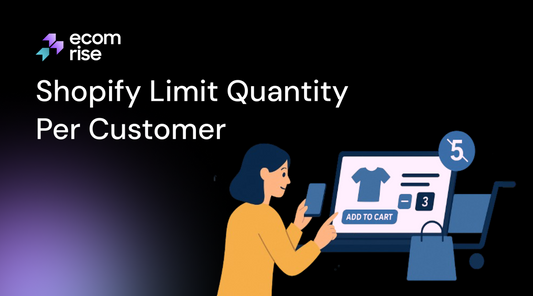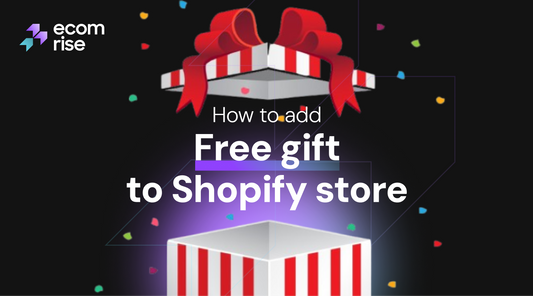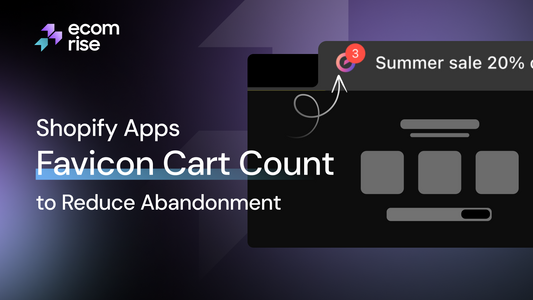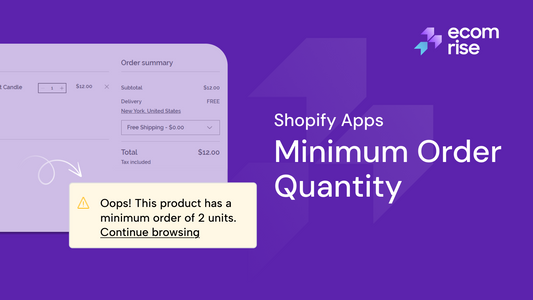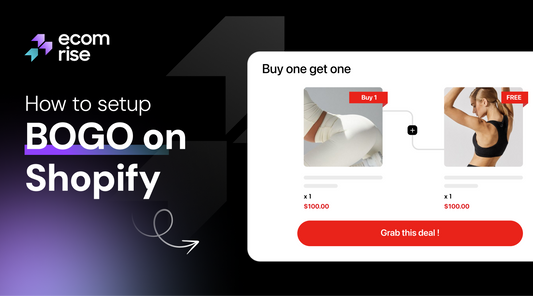How to Add a Shopify Thank You Page Upsell to Boost AOV After Checkout
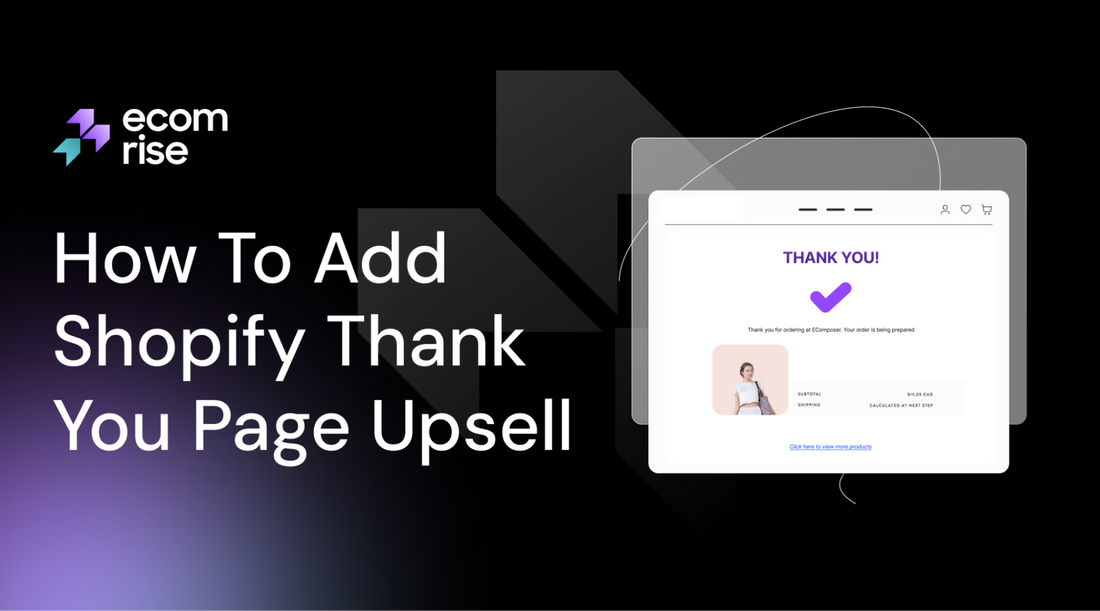
A Shopify thank you page upsell is a powerful way to boost average order value (AOV) after checkout. By showing one relevant, easy-to-accept offer right after purchase—when trust is high—you can drive extra sales, reduce buyer’s remorse, and increase customer lifetime value with little friction
If you’re running a Shopify store, you’re probably already familiar with upselling before checkout, but did you know the Shopify thank you page upsell can be just as (if not more) powerful? The moment right after a purchase is a sweet spot in the customer journey where trust is high, resistance is low, and your buyer is feeling good about their decision.
In this guide, we’ll break down the psychology behind post-purchase upselling, explore proven strategies, walk you through setting up a thank you page upsell on Shopify (both with apps and custom code), and share best practices to maximize results. By the end, you’ll know exactly how to turn a simple “Thanks for your order” page into a revenue-generating powerhouse.
Why use the Thank You Page for Upselling?

Thank You Page upselling transforms the post-purchase interaction into the possibility to promote income. It assists in boosting average order values and improving customer post checkout experience. It exploits special post-purchase customer-psychology: high trust, low friction, momentum.
Understanding Customer Psychology Post-Purchase
High Trust
Right after a purchase, your customer’s trust in your brand is at its peak — they’ve just handed over their money, which means they believe in your product and your promises. But this is also the moment when post-purchase cognitive dissonance (a.k.a. buyer’s remorse) can creep in. Smart brands use the thank you page to reinforce the customer’s decision:
- Communication is Key: Thank them sincerely and let them know exactly what happens next.
- Accessible Support: Offer clear links to help or customer service in case they have questions.
- Social Proof: Include reviews, testimonials, or user-generated content to show they’re in good company.
Low Friction
In this context, friction means any extra effort a customer must put in to interact with your brand. The thank you page is already part of their purchase flow, so adding an upsell here requires minimal clicks and zero page-hunting.
- Simple Onboarding – Help them start using their purchase quickly.
- Intuitive Support – Make help resources easy to find.
- Easy Returns & Exchanges – Show that buying more is risk-free.
Momentum
Once they’re satisfied with their purchase, why not keep that positive energy going? Customers in this phase are more receptive to additional offers, especially if they’re relevant and feel like a natural next step.
- Personalized Follow-Ups – Suggest products that pair perfectly with their recent order.
- Exclusive Offers & Loyalty Programs – Reward them for their purchase instantly.
- Community Building – Invite them into your brand’s social media groups or email list.
The Benefits of Thank You Page Upsells
When done right, Shopify thank you page upsells are a genuine win-win for both your business and your customers.
- Increase Average Order Value (AOV): The thank you page is a low-pressure zone where customers are more open to saying “yes” again. Even a small add-on, like a $15 accessory, can raise AOV significantly over time.
- Boost Customer Lifetime Value (CLV): A smart upsell introduces buyers to more of your catalog early, encouraging repeat purchases. For example, selling socks alongside running shoes builds a stronger brand connection.
- Reduce Buyer’s Remorse: Extra value deals ensure the customer that they have made the correct decision and reduce the chances of returns or cancellations.
Thank You Page vs. In-Cart or Pre-Checkout Upsells
- In-Cart or Pre-Checkout Upsells: These happen before payment, think “Add a matching belt” on a product page or “Upgrade to Express Shipping” in the cart. They work well because customers already have high purchase intent, and the offers are contextual. But they carry risks: distraction, cart abandonment, and difficulty selling higher-ticket items. Tools like EcomRise include this feature, allowing merchants to create smart pre-purchase upsells directly on product and cart pages, helping increase average order value while keeping the shopping flow seamless.
- Thank You Page Upsells: These happen post-purchase, often called “one-click” upsells. There’s zero risk of cart abandonment (because the transaction is done), and you can leverage that feel-good buying momentum. It’s also an ideal time for targeted, personalized offers with low friction. Downsides? Some setups may require the customer to re-enter payment details, and conversion rates can be lower compared to pre-checkout offers.
Effective Upsell Strategies on Thank You Pages
Thank you page upsells work by presenting targeted offers immediately after purchase. This approach leverages customer satisfaction to drive impulse buys and repeat sales.
If the thank you page is prime real estate for customer engagement, these strategies are the blueprint for building revenue on that space. Think of it as adding a little “Would you like fries with that?” moment, but in a way that feels thoughtful, relevant, and impossible to resist.
The “One-Click” Post-Purchase Upsell
This is the Shopify gold standard of thank you page upsells and rightfully so. It enables the customers to add an additional object to their order with one single click without any payment and delivery data needed.
- How it Works: Payment details from the initial transaction are securely stored (temporarily). The thank you page then presents a laser-focused, often discounted offer. With one tap on “Add to Order,” the item is charged to the same card and added to the same shipment.
- Why It’s Effective: There’s zero friction. The customer isn’t making a “new” purchase — they’re simply upgrading or enhancing the one they already made.
Strategic and Relevant Recommendations
Generic “You might also like…” lists rarely work here. The magic happens when your offer feels tailor-made for their purchase.
- Complementary Products: Coffee maker buyers? Offer them a subscription to specialty coffee beans. Camera buyers? Suggest a memory card or protective case.
- Upgrades: Present a premium alternative — an extended warranty, better material, or higher-tier plan.
- Limited-Time Bundles: Group related products together at a discounted price for extra perceived value.
Incentivize with Urgency and Scarcity
Your Thank You Page only holds a customer’s attention for a short while. Use that moment wisely.
- Time-Sensitive Offers: “Limited time offer” or “Expires in 15 minutes” paired with a countdown timer can motivate action.
- Exclusive Deals: Frame it as “only for you” or “just for first-time buyers” to make the customer feel like they’re getting a VIP deal.
Provide a Path to a Higher-Value Offer
Not every upsell has to be another product; sometimes it’s a chance to deepen their relationship with your brand.
- Subscription Upgrades: Turn a one-time purchase into a recurring sale by offering a discount on a subscription.
- Loyalty Program Enrollment: Show them how many points they’ve already earned and what rewards are within reach.
Reinforce the Purchase with Social Proof
- Testimonials & Reviews: Highlight praise for either the original purchase or the upsell item.
- “Customers Also Bought” Banners: Showcase what others have added alongside the same main purchase to encourage imitation.
Keep the Design Clean and Simple
Your thank you page’s main job is still to confirm the order and express gratitude. The upsell should enhance, not overpower.
- Clear Call-to-Action (CTA): Make it bold and straightforward — “Add to my order now” or “Claim my discount.”
- Concise Copy: Keep it short and benefit-driven. Avoid long explanations that dilute the urgency or clarity of the offer.
How to set up Upsell on Shopify Thank You Page
Shopify offers a variety of thank you page upsell apps with unique features, pricing, and customization options. Choosing the right app depends on store goals, product type, and desired level of automation.
Method 1: Using Shopify Default Settings
To create Shopify thank you page upsell, all you need to do is customize the platform using its in-built features. This method is simpler than a specific upsell app, but it is also a fast and free method of entering the business.
Step 1: From your Shopify dashboard, go to Settings → Checkout

Step 2: Scroll down to the Additional Scripts section. This is where you can insert custom code to display extra content on your thank you page.
At this stage, you can:
- Add product images using <img> tags
- Insert “Add to Order” or “Shop Now” buttons with <button> tags
- Include banners, text, or other HTML elements to showcase your upsell offer
For example, an image, a succinct benefit-driven description, and a noticeable call to action button that takes users straight to the product's purchase page could all be used to draw attention to a complementary offering.
While this method requires some basic HTML knowledge, it gives you full control over what appears on your thank you page — without relying on paid apps.
On the other hand, if you want more complex features, you can try other Shopify apps that take upsell customization to the next level, advanced targeting, and one-click post-purchase offers.
|
App name |
Key Feature |
Free version |
Price |
|
Yes |
Premium: $9.99/month |
|
|
Yes |
0-500 orders: $34.99/month 501-1000 orders: $54.99/month 1001-2000 orders: $99.99/month |
|
|
Yes |
Upsell Basic: $4.99/month Upsell Premium: $7.99/month Upsell Premium Pro: $14.99/month |
|
|
Yes |
Free |
|
|
Yes |
Basic: $29.99/month Professional: $49.99/month Plus: $99.99/month |
Method 2: Add a custom Thank You Page Upsell with Code
The core idea is to dynamically display a relevant upsell offer based on what the customer just purchased. This requires three main steps:
- Identify the purchased product(s): Use the code to access the order details, specifically the product IDs or SKUs of the items the customer bought.
- Logic for the upsell: Create a set of rules. For example, if a customer buys a camera, your code should be set to display an upsell for a camera bag or a memory card. This can be as simple as an if/else statement or more complex if you have multiple conditions.
- Display the upsell: Use HTML, CSS, and JavaScript to present the offer. This could include a call-to-action button, a special discount code, a picture of the product, and a brief description. The goal is to make it a one-click process for the customer.
Example: Adding an Upsell with Liquid Code
Shopify's thank you page is part of the checkout process and can be customized using the "Additional scripts" box in your store's settings. This is where you can add HTML, CSS, and JavaScript to create a custom upsell.
The key to this method is using Liquid, Shopify's templating language, which allows you to access and display dynamic order information.
- Navigate to your Shopify Admin: Go to Settings > Checkout.
- Locate the "Additional scripts" box: Scroll down to the Post-purchase page section. This is where you'll insert your code.
- Add your custom code: The following is a simplified example of what your code might look like. This code snippet checks if the customer purchased a specific product and, if so, displays a custom upsell offer.
HTML
{% if checkout.line_items contains product with "your-product-sku-here" %}
<div class="custom-upsell-container">
<h2>Before you go, here's a special offer just for you!</h2>
<div class="upsell-item">
<img src="your-upsell-image-url.jpg" alt="Upsell Product">
<p>Get our {{ 'Your Upsell Product Name' }} for 20% off!</p>
<a target=”_blank” href="your-upsell-product-url.com" class="button">Add to my order</a>
</div>
</div>
{% endif %}
<style>
.custom-upsell-container {
border: 2px solid #your-brand-color;
padding: 20px;
margin-top: 20px;
text-align: center;
}
.custom-upsell-container h2 {
color: #your-brand-color;
margin-bottom: 15px;
}
.upsell-item img {
max-width: 150px;
height: auto;
}
.button {
background-color: #your-button-color;
color: #fff;
padding: 10px 20px;
text-decoration: none;
border-radius: 5px;
display: inline-block;
margin-top: 10px;
}
</style>
How to customize this code:
- Replace "your-product-sku-here" with the SKU of the product that will trigger the upsell.
- Enter the URL of the picture for your upsell product in the <img> tag's src property.
- Change the alt text and the product name to match your upsell item.
- Make sure to update the href attribute in the <a> tag with the direct link to the upsell product's page. For a flawless experience, you can even incorporate a discount code into the URL.
- Modify the CSS in the <style> tags to match your brand's colors and design.
The Best Ways to Make Your Thank You Page Upsell Campaign Better
Effective upselling focuses on one relevant product or bundle to avoid overwhelming customers. Matching offers to the purchased item and testing CTAs can boost conversions, while tracking metrics ensures ongoing optimization.
1. Limit to One Upsell Offer to Reduce Friction
Offering multiple upsell options might be a way to boost AOV, but it often backfires. After completing a purchase, most customers are in a decision-fatigue state. Presenting just one clear, relevant offer simplifies the choice, reduces cognitive load, and significantly improves the chances of a successful upsell. Think quality over quantity.
Pro Tip: Bundle complementary items (e.g., “Pet Shampoo + Pet Brush”) into one offer instead of displaying them separately.
2. Personalize the Upsell Based on the Initial Purchase
The more relevant your offer, the higher the conversion. Use your app's logic to match dynamically upsells to what the customer just bought, by product type, category, or use case. For instance, if someone purchased a protein supplement, upselling a shaker bottle or a 3-month refill makes sense. Irrelevant offers feel generic and are often ignored.
Why it works: Behavioral congruency, customers are more likely to buy again if the new offer aligns with their recent purchase decision.
3. Test Action-Oriented and Benefit-Driven CTAs
The CTA is often what determines the success of your upsell. The use of generic text such as Click Here does not perform as well as action-oriented CTAs that imply immediate benefit. Test CTAs such as:
- “Add to My Order for 20% Off”
- “Upgrade My Purchase”
- “Yes, I Want This Bonus Gift”
These CTAs reinforce urgency and value, creating a fear of missing out (FOMO) that drives impulse action.
4. A/B Test Offers and Optimize with Data
Never assume; you must test it. Use built-in analytics or third-party tools to track impressions, clicks, and conversion rates on your thank you page offers. Experiment with:
- Different product bundles
- Discount levels (e.g., $5 off vs. 20% off)
- Offer placement (top of page vs. middle)
- Visuals (product photos vs. lifestyle shots)
Only through continuous A/B testing will you discover the optimal combination that consistently lifts revenue without hurting customer satisfaction.
Key Metric: Measuring your post-purchase upsell rate - you will use this as your north star to measure your thank you page performance.
How to track the impact on AOV after creating a Shopify Thank You Page Upsells
Define clear KPIs, use experimentation tools, and integrate post-purchase funnels to measure upsell success. Maintain a consistent tracking workflow to refine offers and improve conversions over time.
Defining Your KPIs

Uplift in AOV
- What it is: Measures the change in average order value (AOV) after introducing a thank you page upsell.
- Why it matters: It's a direct indicator of success—more revenue per transaction without additional acquisition costs demonstrates an efficient upsell strategy.
Conversion Rate on Upsell Offers
- What it is: The percentage of customers who accept the upsell when presented.
- Why it matters: High conversion rates suggest that your offer is relevant, well-priced, and frictionless - critical for post-purchase persuasion.
Repeat Purchase Rate
- What it is: The percentage of customers who make a second purchase within a defined timeframe.
- Why it matters: Loyal customers cost less to serve and spend more over time. A strong repeat rate shows that your brand and upsell strategy are building lasting relationships.
Experimentation Tools & Post-Purchase Funnels

1. Setting Up Experiments (A/B Testing)
App-Specific Dashboards
Many thank you page upsell apps include built-in A/B testing. You can test variations like:
- Offer A: 15% off a camera bag
- Offer B: 20% off a memory card
The dashboard will report which performs best—higher conversions, revenue, or AOV uplifts.
Google Analytics 4 (GA4)
For advanced testing, use GA4 by setting up custom event tracking:
- Create events like upsell_offer_a_accepted and upsell_offer_b_accepted.
- Use GA4's Explorations to compare performance and analyze which offer truly resonates with customers.
Shopify Analytics
Once you have determined successful variations of upsells, Shopify analytics can help you confirm that your store has a high overall AOV and sustained revenue over time.
2. Setting Up Post-Purchase Funnels
GA4 Funnel Explorations
Build a funnel to visualize drop-off points:
- purchase (initial order)
- page_view (thank you page viewed)
- upsell_offer_view (upsell shown)
- upsell_offer_accepted (upsell taken)
This funnel reveals where customers drop off, insight that can guide placement or design improvements on your thank you page.
App Dashboards
Most apps offer simplified funnel views—tracking impressions vs. conversions for each offer. This helps you tweak offers based on straightforward performance data.
Hotjar Insights
Hotjar lets you understand the why behind the numbers:
- Heatmaps: See how far customers scroll. A cold zone near the upsell might indicate visibility issues.
- Session Recordings: Watch behaviors of users who don’t convert, identify confusion, bugs, or distractions that block conversions.
Putting It All Together: A Tracking Workflow
|
Stage |
Tool |
What to Track |
Why It Matters |
|
1. Define success |
KPIs |
Uplift in AOV, upsell conversion rate, repeat purchase rate |
Establish your goals |
|
2. Test offers |
App dashboards & GA4 |
Variation performance, revenue lift |
Find what works best |
|
3. Validate long-term |
Shopify Analytics |
Overall AOV trend, revenue consistency |
Confirm sustained success |
|
4. Analyze user behavior |
Hotjar |
Scroll depth, engagement, and friction points |
Improve page design and UX |
Example workflow: Let’s say "Offer A" outperforms in the app test. You then use GA4 to see if the conversion boost reflects in real sales and if Shopify's AOV trends stay higher. Finally, Hotjar confirms most users see the offer, but drop off right after clicking. You might then tweak the upsell text or button design to make the CTA clearer.
Common mistakes to avoid when using Shopify Thank You Page Upsell
Some of the most frequent upselling errors to watch out for include selling irrelevant products, bombarding the customer with an excessive amount of offerings, and failure to optimize the mobile experience. Address fulfillment considerations such as free-shipping to make the post-purchase experience seamless.
Even a powerful upsell strategy can backfire if implemented poorly. Avoid these common pitfalls to ensure your thank you page works for your business, not against it.
- Offering irrelevant upsells: Selling items that make no sense to the customer based on their initial purchase may decrease trust and can make your store look chaotic. One such example involves selling a pet toy once a person has purchased a laptop, which will only be viewed as confusing or frustrating by them. Ensure your after sales deals are related to the desire or type of the customer.
- Overloading with too many offers: Adding multiple upsells on the thank you page creates visual clutter and decision fatigue. Rather than increasing conversions, this overwhelms users. Stick to a single, well-matched offer or curated bundle to maintain clarity and flow.
- Ignoring mobile optimization: A large number of Shopify customers do their buying online. Unless your thank you page is responsive or you have made upsells appear clumsy on small screens, you will turn away potential conversions. Ensure that your upsell design, CTA buttons and images are easy to touch and fast to load.
- Neglecting fulfillment logistics: Upsells do not have to be a complex operation when combined with your shipping and fulfillment processes. To help illustrate this, including a bulky upsell would delay or raise shipping costs unless included properly. Always consider the impact of post purchase offers to the processing of orders, inventory and delivery time.
Frequently Asked Questions
1. Can I upsell on shopify without an app?
Yes, but with limitations. You can create basic manual upsell flows using Shopify’s built-in features like product recommendations or variants. However, for dynamic, data-driven post-purchase or thank you page upsells, using an app provides far more flexibility and automation.
2. What is the best thank you page upsell app for shopify?
The best app depends on your goals. If you want highly customizable, conversion-optimized upsells, EcomRise, Aftersell, and Reconvert are popular and proven. If you want fast setup and bundle offers, Salemate and Bogos are solid choices.
3. Can I show different upsells to different customers?
Yes. Most upsell apps let you personalize offers based on what customers bought, their location, cart value, or even tags from previous behavior. This allows for hyper-targeted post-purchase marketing.
4. Do upsells affect my fulfillment process?
They can. Post-purchase upsells may be added after the initial order is submitted, so it's important to ensure your fulfillment system supports delayed order updates or combined shipping logic. Otherwise, you risk confusion or added shipping costs.
5. Is the thank you page upselling allowed on all shopify plans?
Yes, the majority of thank you page upsell apps are compatible with any of the regular shopify plans. But certain specialized customization options can demand more expensive pricing plans of Shopify Plus or an app.
Final Thought
The thank you page upsell is a frequently missed strategy to help generate more revenue without having to attain new clients, Shopify. Using the appropriate apps, such as EcomRise, ReConvert or BOGOS, it is possible to deploy this strategy with ease and effectiveness. Thank you page upselling is a low-risk, clever strategy to unlock concealed profits and improve post-purchase interaction regardless of the scale of your business (niche or a growing brand).





